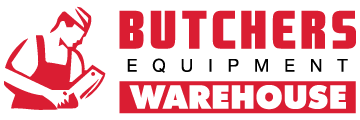Basic cleaver techniques for butchers
From the sharpest experts to the most inexperienced novices, every butcher worth their salt knows the importance of using the right butchers knife for the job. Using the incorrect knife can end up causing you a lot more unnecessary work in the best case scenario, and in the worst you may even end up hurting yourself.
Enter the cleaver. Often called a Chinese cleaver, or a Chinese chef’s knife, it’s a highly versatile knife that’s perfect for cutting larger joins, or cutting small bones or vegetables with equal precision. Instantly recognisable thanks to its wide blade, it’s also got a shorter handle than most traditional knives, which allows for a particularly stable and comfortable grip. The structure of this particular knife allows it to be used for a wide variety of jobs, and knowing how to make the most of it can save you a lot of time, heightening your efficiency and productivity.
Amongst its many functions:
The sharp edge of the blade can make almost any cut
The butt of the handle can serve as a pestle to pound spices
The flat of the blade can be used to bruise or crush foodstuffs, or sweep them from the chopping board into pots and pans
The blunt edge is ideal for tenderising or lightly scoring meat
The first step to making the most of your meat cleaver is to know how to properly hold it. There are some surprising subtleties in the grip that can end up making life a lot easier once you’ve mastered them!
Mastering the grips for a butcher’s cleaver
The all-purpose grip
This grip is great for allowing yourself a little more speed and efficiency when you’re making cuts that generally require a little less precision, such as chopping vegetables and stocks. Start by making sure you’re holding the cleaver handle close to the blade, as this allows for maximum control. The key is then to just place your thumb over one side of the handle, just where it meets the blade, before gripping it with your remaining fingers.
The pinch grip
This grip is more focused on the blade itself, and is the preferred option for cuts that need to be more precise, such as cutting into bones or large chunks of meat. Here, you’ll also need to grip the handle of the knife where it meets the blade, but the big difference here is that you’ll also have to put your thumb over the blade rather than the handle, with the index finger on the other side.
Essential cutting techniques with a cleaver
Naturally, each butcher often develops their own preferred technique for cutting with their butchers knives and equipment, for maximum efficiency. However, for safety and efficiency reasons, it’s likely that any individual techniques you encounter (or develop yourself) will all be based on the same basic guidelines below.
Mincing meat
Start by gripping the cleaver with the pinch grip, and raising it from the board. Then let it fall like an axe, but much more gently and controlled. Then simply repeat this motion, pivoting the blade from side to side until the job is done.

Remember not to chop too forcefully, as this can lead to accidents and injuries - let gravity do most of the work. If your cleaver isn’t cutting very well, more force isn’t necessarily the answer. It’s safer to make sure that it’s properly sharpened first!
Slicing
When you’re butterflying or evenly slicing meat, it’s best to use a horizontal cutting technique. That means holding the cleaver so that it’s at a horizontal angle to the meat on the cutting board. Use your free hand to stabilise the meat by holding it from the top, and then crack on with slicing. Remember to keep the cleaver horizontal and be careful to make sure you don’t cut your hand!
Scaling
Scaling a fish is even easier, and you can probably use the first grip we outlined above. Hold the fish head with your free hand, and run the sharp blade up and down it to descale it. That’s all there is to it!
If you’re looking to buy or replace your own butchers cleavers, you’re in exactly the right place - we’ve got a great range of the best butchers cleavers to choose from here at Butcher’s Equipment Warehouse. Wusthof and Icel are amongst the leading manufacturers whose cleavers we stock, and if you’re thinking about a brand that offers you something a little different when it comes to handles, you might want to take a look at our Victorinox fibrox and rosewood cleavers.




